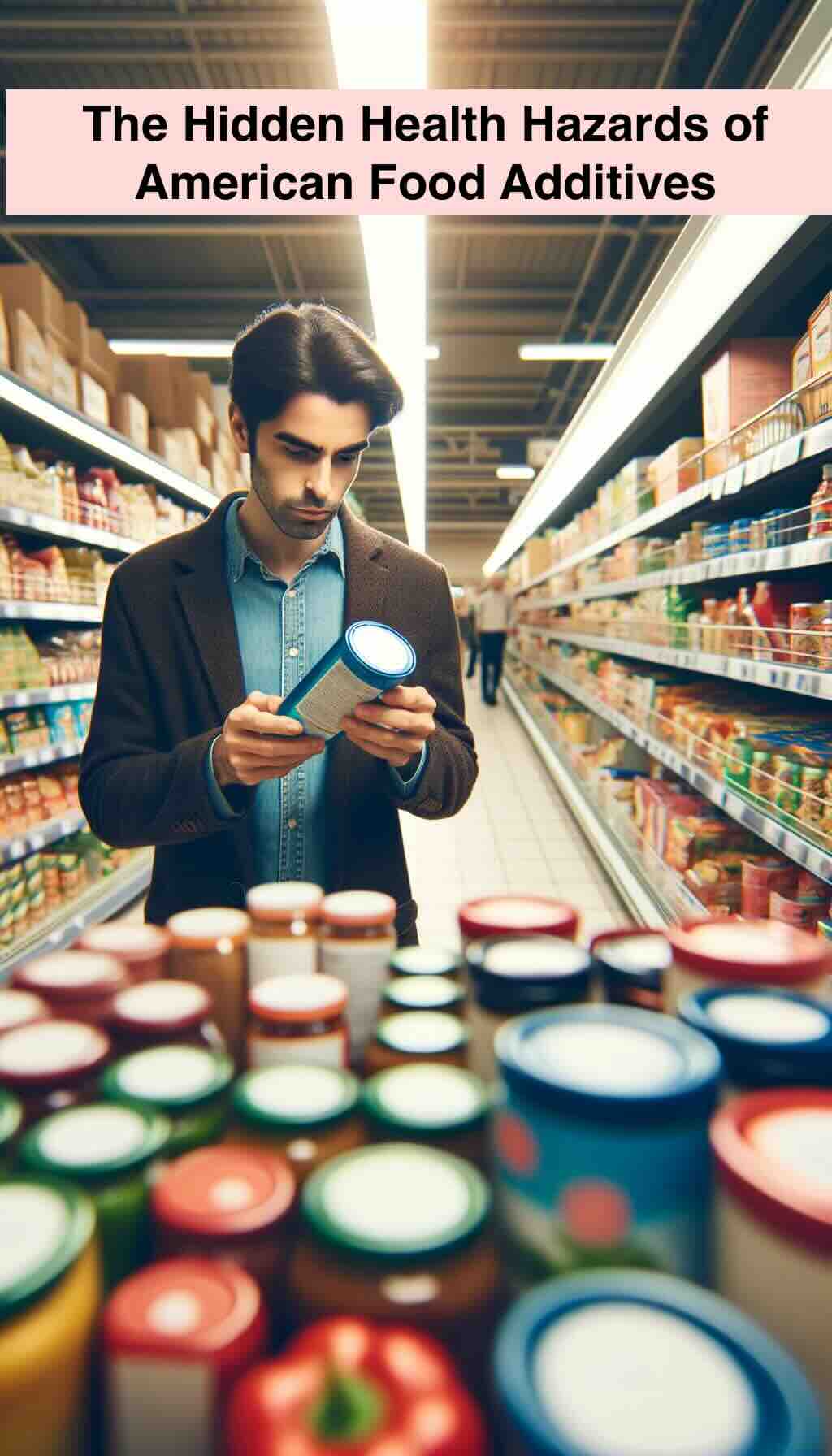
In an era where clean eating and wellness are more than just trends, the scrutiny of food additives used in American products has intensified. Despite the Food and Drug Administration’s (FDA) rigorous standards, a growing body of scientific evidence and international bans have cast a shadow over the safety of several food additives commonly found in the U.S. This deep dive explores the controversial world of American food additives, shedding light on the health risks they pose and offering practical advice for navigating the complex landscape of modern food consumption.
The Unsettling Reality of Food Additives
Food additives have been a mainstay in the American diet for decades, serving a variety of functions, from preserving freshness to enhancing flavor. However, recent research from the American Academy of Pediatrics and other reputable sources has raised significant concerns about their impact on health, particularly in children. Chemicals used both directly in foods and indirectly through packaging have been linked to adverse health effects, including developmental issues, DNA damage, and increased cancer risk.
A Closer Look at the Culprits
- Artificial Dyes: Found in candies, beverages, and snacks, some artificial dyes have been associated with hyperactivity in children and other health issues, leading to their ban in several European countries.
- Trans Fats: Although partially hydrogenated oils (PHOs) have been phased out in the U.S., the legacy of trans fats lingers with their link to increased heart disease risk.
- Azodicarbonamide: Used in bread products to bleach and condition dough, this chemical is banned in the EU due to concerns about its carcinogenic potential.
- BPA (Bisphenol A): Used in plastic containers and can linings, BPA exposure is linked to reproductive issues and cancer, prompting a shift towards BPA-free products.
The International Perspective
The stance of other countries on American food additives underscores the global concern. For example, the EU’s precautionary principle has led to stricter regulations and bans on substances still permitted in the U.S., sparking a debate about the adequacy of American food safety standards.
Navigating the Minefield: Practical Tips for Consumers
In light of these concerns, here are actionable steps to minimize exposure to harmful food additives:
- Read Labels Carefully: Become familiar with the names of concerning additives and check product labels diligently.
- Opt for Whole Foods: Reduce reliance on processed foods, which are more likely to contain additives, in favor of whole, fresh foods.
- Seek Out Alternatives: Explore natural or organic products, which adhere to stricter guidelines regarding food additives.
- Stay Informed: Keep abreast of the latest research and regulatory changes concerning food additives.
Advocating for Change
Beyond individual action, there’s a growing movement advocating for stricter regulations and transparency in the use of food additives. Supporting organizations that lobby for food safety reforms and choosing brands committed to clean labeling can amplify consumer demand for healthier, safer food products.
Conclusion
The controversy surrounding food additives in the U.S. serves as a wake-up call for consumers, regulators, and the food industry alike. By staying informed, making conscious choices, and advocating for stronger safety standards, we can collectively push for a food system that prioritizes health and well-being over convenience and cost-saving. In the journey towards cleaner eating, knowledge is power, and action is the catalyst for change.
10 FAQs About American Food Additives and Health
- What are food additives?
- Food additives are substances added to food to enhance its flavor, appearance, or preservation qualities. They include colors, flavors, sweeteners, and preservatives.
- Why are some American food additives banned in other countries?
- Certain additives are banned due to health concerns raised by scientific studies, which have linked them to adverse effects such as hyperactivity in children, cancer risk, and heart disease.
- What is azodicarbonamide, and why is it controversial?
- Azodicarbonamide is a chemical used in the U.S. to bleach flour and improve the texture of bread dough. It’s controversial because it’s been linked to carcinogenic effects and is banned in the EU and Australia.
- Are artificial dyes dangerous?
- Some artificial dyes have been associated with negative health impacts, including behavioral issues in children. Countries like the UK and Norway have restrictions on certain dyes due to these concerns.
- What is BPA, and where is it found?
- BPA (Bisphenol A) is a chemical used in making plastics and can linings. It’s been linked to reproductive issues and cancer, leading to a push for BPA-free products.
- How can I avoid harmful food additives?
- Read labels carefully, choose fresh or minimally processed foods, opt for organic products when possible, and stay informed about the latest research on food safety.
- What are trans fats, and why are they harmful?
- Trans fats are created by adding hydrogen to vegetable oil (a process called hydrogenation) to make it solid at room temperature. They’ve been linked to an increased risk of heart disease and are banned in many countries.
- Is there a safe way to consume products with additives?
- Moderation is key. Focus on a balanced diet rich in whole foods, and when consuming processed foods, choose those with fewer and safer additives.
- How can I stay updated on food additive regulations and safety?
- Follow reputable health and nutrition news sources, government regulatory agencies like the FDA, and non-profit organizations dedicated to food safety.
- Can consumer pressure influence the use of food additives?
- Yes, consumer demand for cleaner labels and safer ingredients can drive companies to reformulate products and reduce or eliminate the use of controversial additives.
Blog Tags for the Post
food additives, health risks, American diet, banned substances, artificial dyes, trans fats, BPA, azodicarbonamide, consumer safety, clean eating












